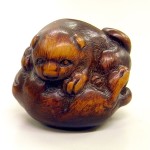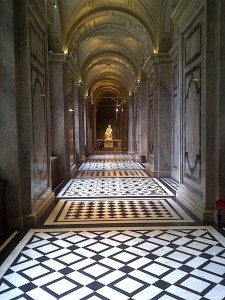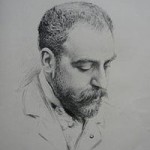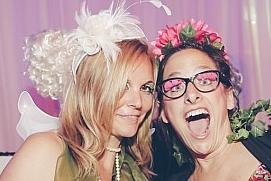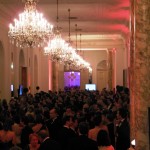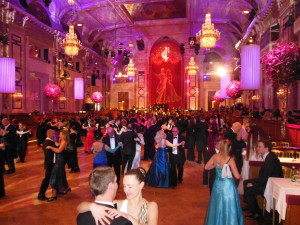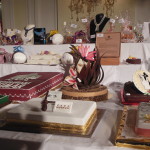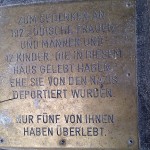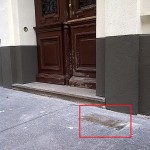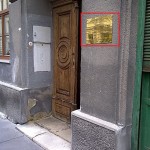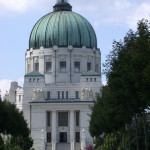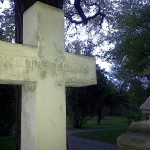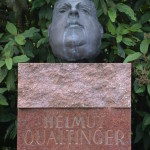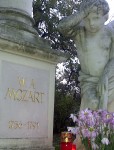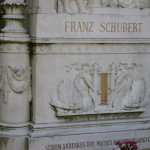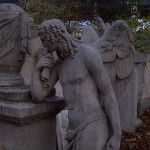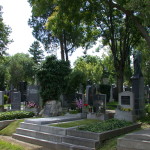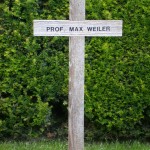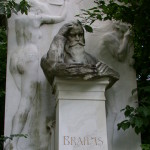Edmund de Waal: Bringing to Life the Shadows of Vienna, Family and Memory
An hour with the internationally acclaimed sculptor and author of the New York Time’s Best Selling novel, The Hare with the Amber Eyes
…continues to speak like a message in a bottle, that has been cast – surely not always in the powerfully hopeful – belief, it could wash up on land somewhere, sometime, on a heartland perhaps.
– Paul Celan (Bremen Speech (1958) see German version on Planet Lyrik )
When Edmund de Waal’s ancestors fled Austria decades ago, I doubt any of them could have imagined the reception he would receive in the Vienna Museum of Art History (Kunsthistorisches Museum) on a very cold and wet Monday evening in January. The waiting list began weeks before his scheduled talk and I barely managed to finagle a spot after an initial “Sorry, we’re full.”
The place was packed and at first, all the fold-out chairs taken. A friend and I assumed standing room in the very back of the grand black and white marbled hall and were eventually rescued by a kind security guard who rearranged a long red velvet bench for us. Finally a good view.
I admit, the crowd surprised me. After all, the museum pamphlet description promised a yawn-evoking evening at best (here a quick and dirty translation of the German):
For the series “Artist Choice”, author of the best-selling novel, “The Hare with the Amber Eyes” and successor of the Euphrussi family will curate an exhibit with objects from our collection. De Waal is fascinated with the sometimes labyrinthine paths that museum objects take and the changing meanings that often go along with them. In addition, he will address the history of the objects’ owners.”
Well, yes, he did do that.
But such a description is akin to describing Lincoln’s Gettysburg address as a cemetery dedication. Because de Waal’s talk was not a bunch of historical facts strung together about lifeless objects. No. His talk felt more like an appeal of a great master to his students to do more when journeying through life.
His message? Open your eyes. Recognize connections. Draw out the shadows hiding in the corners and bring them back to life. Frame the seemingly insignificant and hang it on the wall. Remember to pause and bring forth the dab of gold in the background. Recognize the breathturns and blank spaces of the page as a significant part of the text’s message.
De Waal asks, “What do you do with the responsibility that comes with the pursuit of memory?” He says he embarked on his research seeking perhaps some “pseudo-American closure of the whole bloody thing” that happened to his family before, during and after fleeing the Nazis. But rather than bringing De Waal closer to a conclusion the story and his investigations drew him ever deeper, ever further, until at some point, he (and no doubt, much to her dismay, his wife as well) must have realized there would never really be a closure, just more layering.
De Waal’s talk was a masterpiece of sadness, humor, reverence, incomprehension, resilience and forgiveness. The location was touchingly suitable – downright fitting that his words should echo through the same halls that house masterpieces by Raphael, Vermeer, Rembrandt, Rubens, Dürer and Bruegel – and hundreds of other objects that embody all the different kinds of lives he mentioned – lives that eternally and simultaneously exist in ever-changing landscapes of meaning evolving from the creator to each individual beholder, day in and day out, for centuries. Messages in a bottle cast in the hopes of landing somewhere, sometime in someone’s heart.
Thank you, Kunsthistorisches Museum of Vienna for finding a spot for me on the guest list. And thank you, Edmund de Waal for opening our hearts, minds and eyes in your hour long layering of memory in a city where every cobblestone is layered with hundreds of years of hundreds of people’s memories – some beautiful and others terribly, incomprehensibly tragic.

